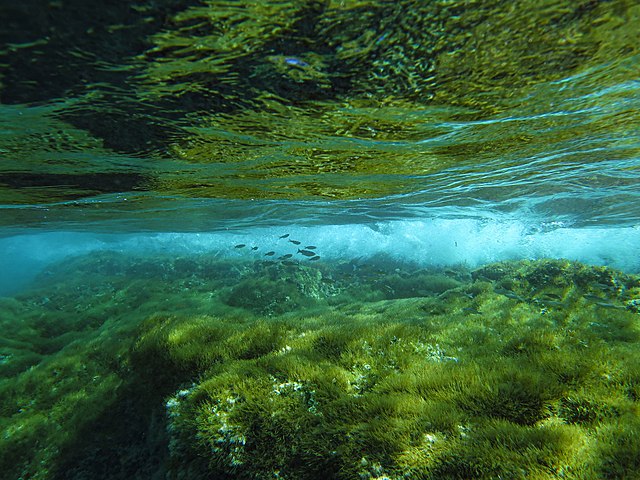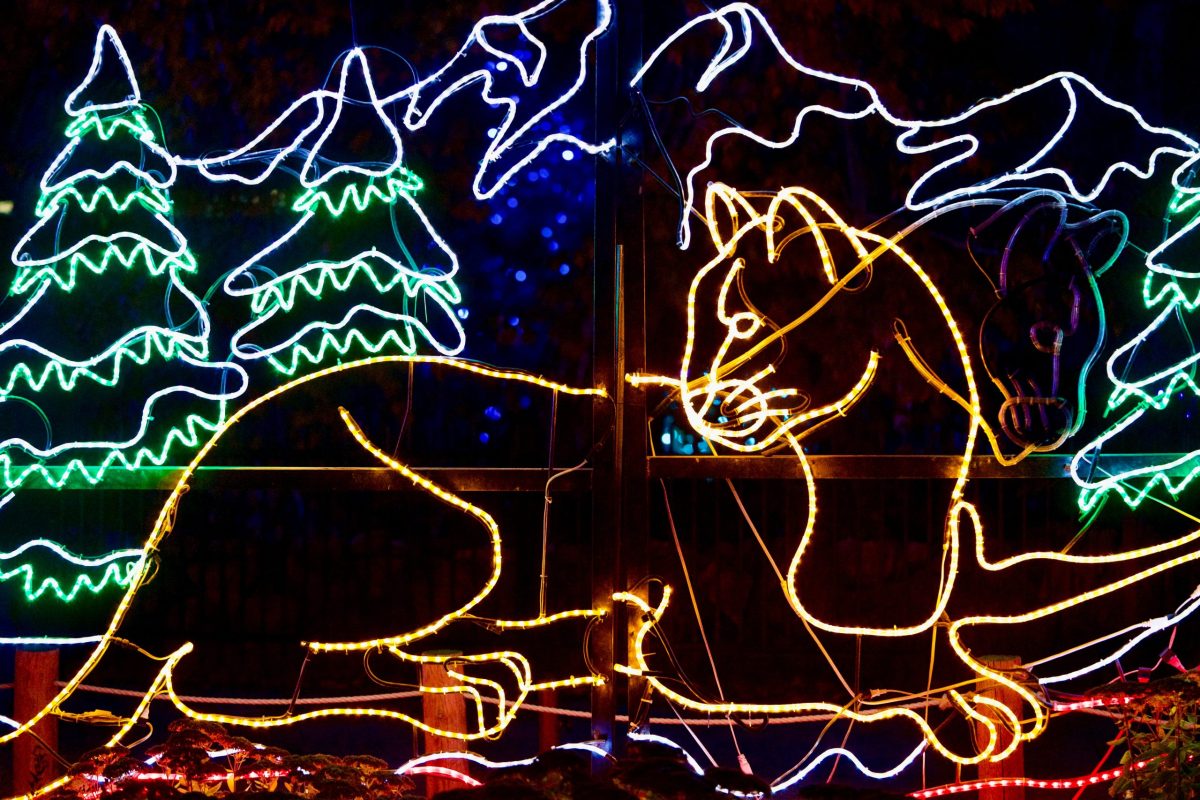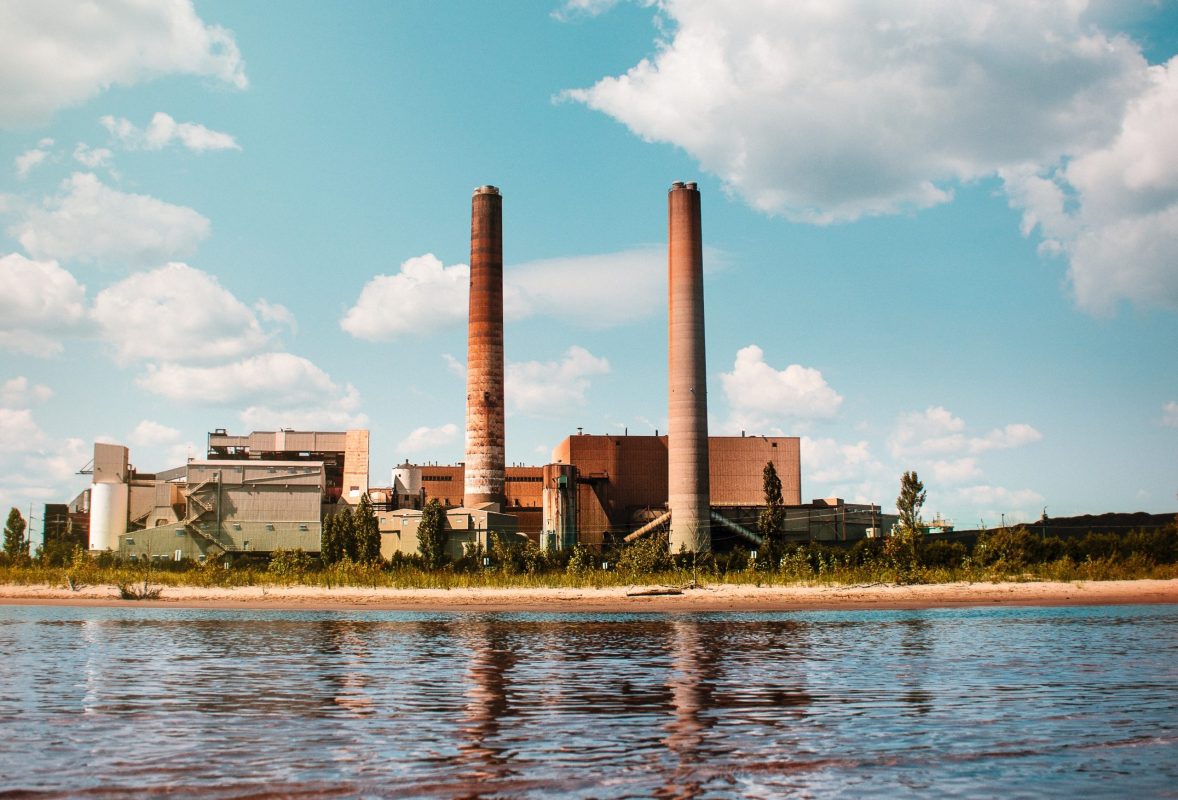interviews
The Ocean is Queer and Wondrous
Sabrina Imbler's essay collection, "How Far the Light Reaches" explores resilience in the face of that which seeks to destroy us

In Sabrina Imbler’s How Far the Light Reaches: A Life in Ten Sea Creatures, the ocean is queer. Survival is subversive. Tiny shrimp scurry around hydrothermal vents on the ocean floor, scrappy and alive in a place hostile to all life. A yeti crab dances for food. The goldfish, an animal we can only imagine as a tiny carnival pet, grows feral when released into the wild, far bigger and browner than the bowl that once confined it. All this time, we realize, we’ve had the wrong idea about goldfish.
Reading this book, you can feel Imbler, a queer, non-binary writer of mixed race, holding up each sea creature to the light, asking not “what are you?” but “How do you live?” What they imagine for these beings—perhaps hope for—are unstable, wide open futures. Descriptions invite readers below sea level (“personal pan pizza,” “shiny bodies like someone put a dime on a pat of butter”), we watch life bloom in the wake of a whale’s death, and, somehow, there is beauty even in a ten-foot worm with jaws. Yet even when thinking of the butterfly fish, Imbler displays a resistance to the uninterrogated. “Almost every system we exist in is cruel, and it is our job to hold ourselves accountable to a moral center separate from the arbitrary ganglion of laws that so often gets things wrong,” they assert.
These essays are deeply personal, nuanced, searching. “My Mother and the Starving Octopus” examines Imbler’s relationship with their Chinese mother and their shared anxiety around food. “My Grandmother and the Sturgeon” recounts how Imbler’s family fled Shanghai during occupation, escaping on a small houseboat down the Yangtze and nearly dying of starvation until a Japanese soldier brought them a sack of rice. In a piece that raises questions about sexual autonomy and the gray zone, Imbler juxtaposes the predatory habits of the sand striker with that of boys and men, marveling at the ingenuity of creatures in danger, even themselves. “Hybrids,” an essay “dissecting ourselves,” grapples with the writer’s half-Chinese, half-white identity, confronts histories of miscegenation and eugenics, and recalls how they first encountered the word “half-breed” when they were twelve years old and scoping out a Neopets chat board. (“And this is the part where I might tell you how my parents met”—they write—”but I don’t want to because I have to keep some parts of my family to myself”).
The collection, reckoning with climate change and disaster, relays anxiety but also wonder, innate curiosity, and adventurousness. “There are many ways to be a predator,” Imbler writes, but even more ways to exist. Ten creatures, they seem to be saying—but one life.
Annie Liontas: Is the ocean queer?
Sabrina Imbler: I was just reading an essay by Sarah Thankam Mathews, the author of All This Could Be Different, where she writes: “Oh me and my friends like to play this game where we look at an object and we’re like, is this gay? Is this light bulb gay? Is this rug gay?” I think that’s a good exercise to apply to everything around you, but, also, the ocean is very frequently described as a queer space. If you look anywhere in the natural world, if you think about it biologically, everything is queer. Things are reproducing and creating more of themselves in ways that are so beyond any kind of frame of heterosexuality that we humans have. I think of the ocean as a space of imagination and impossibility, and I think about queerness also as a place of possibility and imagination and wonder. So, yeah, at least to me, the ocean is gay. But I don’t think anyone looks at the ocean and thinks, “This is straight.”
AL: I’m also thinking about queerness as resilience and how, considering all we’ve done to try to kill the ocean, it keeps coming back in these surprising ways. That was one of my favorite things about your book. You tell us “it is easier to die than live,” but we are shown, time after time, the resilience of these ten creatures, often juxtaposed against the experiences of queer youth. So what do you want us to remember about survival?
SI: I’m happy that you picked up on that word resilience. So much scientific research on biological systems and the ocean is centered around this question of resilience. We often think there’s no way there could be life here, and then we find it, and we’re like, “Why? Why is it here? How is it living? How is it thriving?” These spaces are defined by our very limited human view of what we need to survive and what we find hostile. I’ve been recently reading Ed Yong’s An Immense World, also a book with a bunch of different creatures. It’s very focused on the specific ways these animals can sense their environments. We use light, we use heat, but other creatures have all these different staples for how they experience the world, and are unknowable to us.
How do we manage to be resilient in the face of all these things that seek to destroy us?
If I were to be plunged down to the bottom of the sea, I would die immediately. I don’t belong there—they belong there. Still, I couldn’t help but draw these parallels in the book, using the ways that their bodies have evolved to be perfectly suited for these foreign and alien environments, spaces that might not seem friendly to life. That’s the big thread of the book, How do we manage to survive? How do we manage to be resilient in the face of all these things that seek to destroy us? Whether that’s the chemistry of the earth or, you know, these communities around us that are human or non-human that we may feel threatened by. I could never camouflage my body in the way that a cuttlefish could, I can’t take that directly and apply it to my own life. But all these ways of living, they sort of open new portals, and I start to wonder, how does this make me feel about the way that I move through the world and the way that I am perceived and the agency that I have in my own life?
AL: “My Mother and the Starving Octopus” reads like an act of empathy towards your mother, who immigrated from Taiwan, but it also grapples with your eating disorder. (“If mom grew up wanting to be white, I grew up wanting to be thin”). What did this writing and research illuminate about your relationship with your mother and your own body?
SI: The first time I wrote about the octopus was for Catapult. I didn’t really think about the ethics or understand consent back then, I was just publishing this essay on this website and thinking, my mom’s not gonna see it; who’s gonna see it except for my little community?
When it was time to revise and expand it for this book, I realized my mother was the spark of this story. But I really want to respect her privacy as a person and acknowledge that the reason I’m writing about this octopus and my relationship to it is informed by my own fixations. So I tried to remove a lot, and when I expanded the essay, I expanded my own personal experiences. Then I sent her the final version. I was so nervous. Maybe she would say that I couldn’t write it, or that she didn’t want to appear in it. And I love my mother so much and I’d respect her wishes. But it ended up being a really generative conversation for us, because over the years I had tried to broach a conversation about eating and about food and about weight, and we would hit these walls. It was very raw for both of us, and neither of us really wanted to go to certain places. And my mother is very stubborn. But she read the essay and added some points of clarification, like moments of mismemory that I had had, and that was really interesting. It allowed me to dig deeper and to ask, why did I remember that this way? Why did my mother remember this that way? She helped add a lot of levity in how she talked about her own body and her own eating. She shared an anecdote of this racist doctor being like, “Stop eating so much Chinese food!” and her being like, “Fuck you!” I think that’s so funny, and it also just helped spotlight how my mother pushed back. I was so inspired.
AL: A similar stitching or mirroring also happens in “How to Draw a Sperm Whale,” where you borrow the language of whale autopsy to give us the necropsy report of a queer relationship. But, as with the rest of the essays, you’re never wanting to draw direct lines, it would be too neat. Yet it does seem like you learn something about aloneness versus feeling alone.
SI: I was still reeling from this breakup, not necessarily the breakup itself, nor the relationship itself, but—just trying to understand why this breakup had this magnified impact on me. I found it almost embarrassing, like, why am I still thinking about this person? Also, I really didn’t want to write a breakup essay that looked the same. I needed to find a wrinkle that made it feel like a fresh and generative thing to write about. I kept coming back to Leslie Jamison’s The Empathy Exams because they felt very similar in the ways they asked, how do we use medical language to talk about death or illness or grief? These incredibly emotional human experiences, how does the language of bureaucracy warp them? I read so many whale autopsies, I went through so many weird marine and mammal stranding reports and looked at all of these very graphic photos. I went in many different directions. But the heart of the essay, ultimately, was about how the whale lived. Not just the grief, but what remains after something that large dies or is killed? How can we think about that? What is restored?
I learned that queerness is not tied up with a relationship. It really is tied up with identity and how you live your life and your platonic community.
I started [“How to Draw a Sperm Whale”] as an essay about this particular relationship, and then in writing it, I realized this is much more. It turned out to be about me and how I learned to understand myself as a queer person who could be alone and who could be single. I learned that queerness is not tied up with a relationship. It really is tied up with identity and how you live your life and your platonic community. What it means to be alone, and how there can be joy in that.
AL: Tell us why we should love crabs.
SI: Well I’m a Cancer.
AL: Same!
SI: So I guess this is a biased conversation. We are all pro-crab. I should come out in the pocket of Big Crab.
I mean, crabs are super cool. I don’t know if you’ve heard of the evolutionary phenomenon called carcinization. It goes viral every so often because it is so funny: this evolutionary trend of more and more separate evolutionary lineages evolving the crab body plan and how there are so many things that we call crabs that are not true crabs. Like porcelain crabs, or spider crabs, or king crabs, or yeti crabs, which are technically squat lobsters, which are also not lobsters. [These] species evolve over time and their bodies realize that actually, the ideal form to be is a crab. You can scuttle, you can walk in all these different directions. You have a hard shell. It just works. I’m less interested in taxonomy debates and am more inspired by the fact that all of these different lineages came independently to the conclusion it just makes sense to be a crab. You find them all over the world. I was in Puerto Rico in March, and I was at a gas station, and there was a crab. It lived in a hole, it would come out and snap its little claw and go back. They’ve been able to conquer all these different niches and little realms on earth, it’s just very, very impressive.
AL: Who is the unsung hero of the ocean?
SI: My book is absolutely biased towards large or at least visible creatures. A lot of the creatures that I wrote about, such as the salps, which are gelatinous—their body is almost entirely water, they really don’t fossilize—are hard to capture. It’s hard to record them through our own human machines and human contraptions, and yet, they are responsible for cycling so much carbon toward the bottom of the ocean. They’re agents of global cooling, it’s just all happening out of sight and out of mind. As I was learning about the salps, I had this realization that, oh my God, my book is all made up of macroscopic organisms. Maybe I should have a plankton chapter! There’s this whole scale of oceanic creatures that I didn’t even get into, yet they are so vital to the chemistry of the ocean and they feed all of the creatures in my book, in some way. The plankton that are photosynthesizing at the top of the ocean are responsible for all of the nutrients that cycle out into the creatures that I talk about. And krill! Krill do so much! Without krill, so many whales wouldn’t be around. There was a moment when I was looking at all the essays in my book and I was like, where are the tiny guys?
AL: A frank discussion about climate change is inevitable, grim, heartbreaking. What in the research was hardest to confront? What is our failure of imagination?
SI: As someone who is a science journalist by day, every day I wake up, I think about climate change at least once. It is so present in so much of the work that I do. I was really trying to figure out how I could talk about climate change in the book. I didn’t want it to feel redundant or preachy or to distract from the connections of these narrative switchbacks, but it was absolutely something that I thought about all of the time, this grief that I held throughout the reporting process. I would learn about a creature, and then I would immediately think, let me just Google it and see what’s happening. And what would come back is [something like] “half of this population will disappear because of climate change,” or a statistic that all sharks are in danger because of climate change. The grief and anxiety that hung over the process helped bring me back to the work when I felt disconnected from it or when I found it hard to write. It creates this urgency around why I want people to know about these creatures and why I want them to care.









